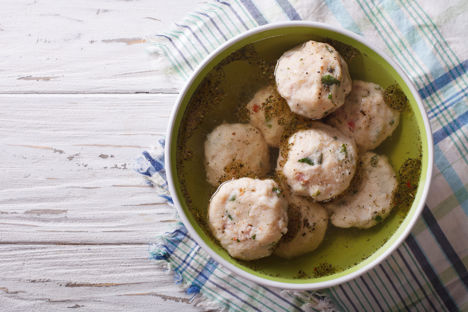
Speck and spätzle: an introduction to Ladin cuisine
South Tyrol is known for its unique cuisine, combining Italian, Swiss and Austrian cooking styles with unique herbs and flowers foraged from the Dolomite Mountains. Discover some of the region's most famous Ladin dishes.
Speck and spätzle: an introduction to Ladin cuisine
South Tyrol is known for its unique cuisine, combining Italian, Swiss and Austrian cooking styles with unique herbs and flowers foraged from the Dolomite Mountains. Discover some of the region's most famous Ladin dishes.
Take a trip to the Dolomite Mountains in northern Italy and no matter how fluent in Italian you are, there’s a small chance you may struggle to understand what the locals are talking about. That’s because around five percent of the South Tyrolean population are Ladin, a community with its own dialect that has helped shape the traditions, customs and dishes of the region.
Being remote and high up in the mountains, the old farming communities of South Tyrol were all but cut off from the rest of Italy and had to become almost entirely self-sufficient throughout the year. This meant there was a limited selection of ingredients to cook with – especially during the winter months – so cooks had to get creative. It’s this that makes Ladin food and drink so unique; with a limited larder, influences from Italy, Austria and Switzerland and a wealth of wild herbs and flowers on their doorstep, Tyrolean cooks were cooking in true cucina povera style, making the most of what they had.
While South Tyrol now has access to produce from all over Italy and beyond, the traditional dishes of the area still prove as popular as they've ever been. Many of the restaurants in the region specialise in classic Ladin cuisine and even those with a Michelin star offer their own riffs and new twists on age-old recipes. Here are ten of the most popular dishes which best represent the food and drink of the Dolomites.
Typical Ladin dishes
These bread dumplings are only found in northeast Italy and are very similar to the German knödel. They’re very simple, being made of nothing more than stale bread, milk, eggs and flour, but are often flavoured with local cheeses or Speck, a local smoked prosciutto. They are often poached and served in a broth, and seen as a true peasant dish that best encapsulates Ladin cuisine.
These funnel cakes (also known as Tyrolean pancakes) are poured through a funnel into a pan filled with hot oil to create a spiralled shape. They are like thick, fried crepes, served hot and covered in icing sugar with a spoonful of jam. Traditionally, they were made by the mother of a bride to give to the groom when the wedding was being planned, and were shared out between neighbours and houseguests.
There are lots of Tyrolean cheeses that have been made on the rural farms throughout the region for decades, but one of the most popular is Graukase, a rindless grey cow’s milk cheese. It is very low in fat and made without rennet, served in slices dressed in oil with bread and is PDO-protected.
One of the most famous Austrian desserts is also incredibly popular in South Tyrol. It is a chopped up sweet omelette filled with fruits – usually apples and raisins – and served with jam and sugar.
Essentially a thicker, half-moon-shaped ravioli made with a combination of wheat and rye flour, these filled pastas tend to contain spinach and ricotta, but sometimes spiced potato or onion are included too. They are generally served with butter and grated cheese.
A traditional crispbread from the Tyrolean mountains. Made from rye flour, the thin breads are flavoured with spices such as caraway, fennel and star anise, and are baked quickly so they can be stored for many months without spoiling. They are generally served with pieces of local cheese and bacon.
These flour dumplings are made using a special machine that works in a similar way to a potato ricer, pushing out thick noodles that are dropped directly into boiling water or broth to cook. They are either served in soups or a side dish, and some are flavoured with spinach or sauerkraut.
One of the most famous Ladin products, Tyrolean Speck is PDO-protected and popular throughout Italy. It is a type of smoked prosciutto, made from pork shoulder, leg and belly and flavoured with spices such as juniper. It is then cold-smoked for around three weeks and left to mature for months afterward. Speck is used to add flavour to all sorts of other Ladin dishes.
These round filled pasta contain ingredients such as spinach, ricotta, sauerkraut and potatoes, and are deep fried until they turn crispy. The dough is made from a mixture of rye and wheat flour, and they were traditionally eaten every Saturday on Tyrolean villages.
Pearl barley, beans, a few vegetables, milk and some smoked pork – that’s all that’s needed to make this traditional South Tyrolean soup. It’s a filling, hearty dish that would have staved off the cold weather up in the mountains over the winter, and could be made with simple farmhouse ingredients and whatever fresh produce was available.



